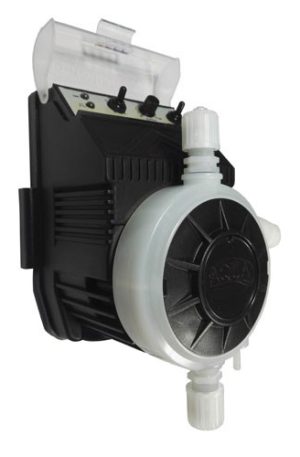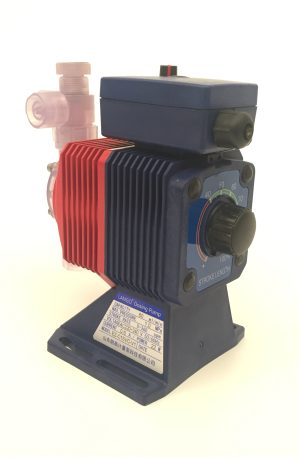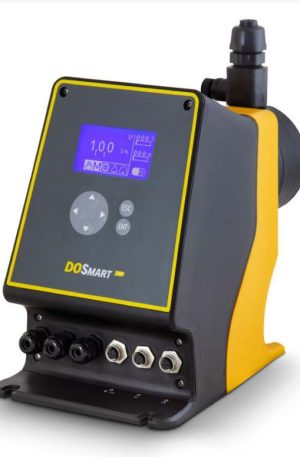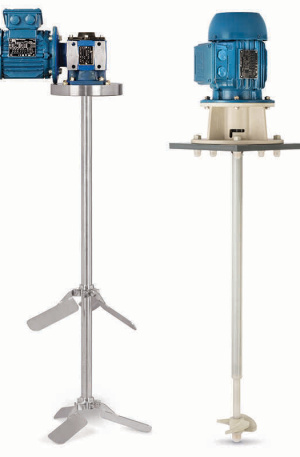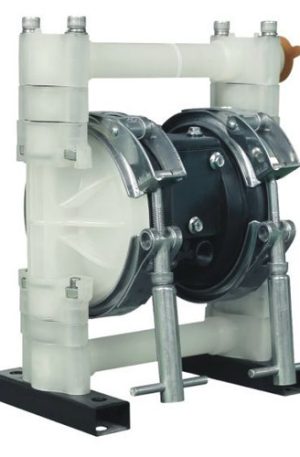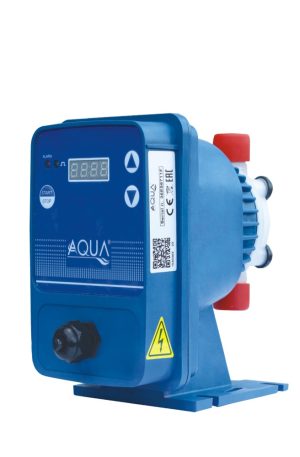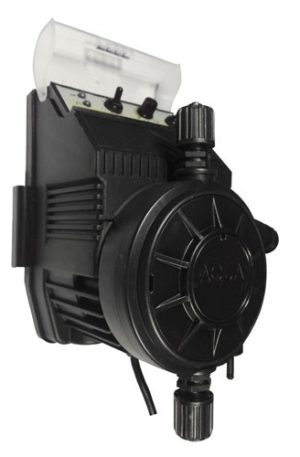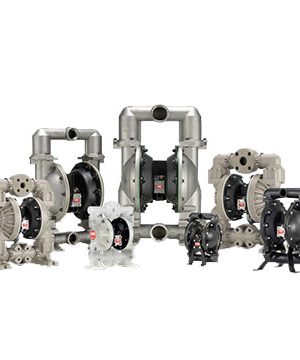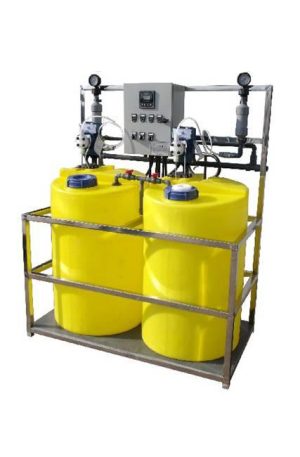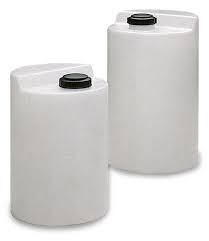Distributor & Supplier of Chemical Dosing Pumps in Pakistan
ENGINEERIC is one of the leading metering pump parts manufacturers and suppliers, with a professional factory we can supply the best API Standard and API675 chemical dosing pumps, controlled volume pumps, chemical metering pumps, standard metering pumps, standard dosing pumps at both low price and good quality.
If you are looking for German technology or famous brand metering pumps, please feel free to contact us.
We are the distributor/ supplier of Metering pumps or dosing pumps, chemical dosing pumps/Metering Pumps. We are the distributor of dosing pumps in Pakistan that’s is the reason we provide dosing pumps/Dosing pumps at a very reasonable price.
ENGINEERIC deal in Prominent, SEKO, LMI (Milton Roy), ITC, LANGO, LAGAO, NewDose, EMEC, Injecta, Micon, AQUA,Colberge, Iwaki, STEIEL, DOSATRONIC, PulsaFeeder, Ovell, FGPumps,NewDose and many more Brands.
ENGINEERIC offers dosing pumps for laboratory use. They are the ideal solution for accurate, reliable, and stable dosing applications.
Chemical Dosing Pumps or Metering Pumps
A chemical dosing Pump or metering pump is a type of pump designed to deliver a precise, controlled volume of chemicals, liquids, or fluids into a system.
These pumps are widely used in industries such as water treatment, chemical processing, pharmaceuticals, food and beverage, and agriculture, where accurate dosing or metering is essential to ensure the correct concentration of chemicals or additives.
Key Features of Chemical Dosing or Metering Pumps:
-
Precise Flow Control: Chemical dosing pumps or Metering pumps are engineered to deliver a fixed, accurate amount of liquid per stroke or per time unit. The flow rate is typically adjustable, allowing for precise control of the chemical dosage.
-
Positive Displacement: These Chemical dosing pumps operate based on positive displacement principles, meaning they move a specific volume of fluid with each pumping cycle. This allows for accurate and consistent dosing even against varying system pressures.
-
Adjustable Output: The output of a chemical dosing pump can be adjusted to match the requirements of the process, typically in units like liters per hour (LPH), milliliters per minute (mL/min), or gallons per day (GPD).
-
Materials of Construction: Chemical Dosing pumps are often made from materials like stainless steel, PVC, PTFE, and other corrosion-resistant materials, depending on the nature of the chemicals being dosed.
-
Types of Dosing Pumps:
- Diaphragm Pumps: Use a flexible diaphragm to move the liquid, commonly used for dosing aggressive chemicals.
- Piston Pumps: Use a piston mechanism to deliver fluid, often used when high pressures are required.
- Peristaltic Pumps: Use rollers to compress and move flexible tubing, ideal for applications where the liquid should not be exposed to the pump internals.
- Gear Pumps: Use gears to move fluids; they can provide high precision in the low flow rate range.
- Lobe Pumps: Similar to gear pumps but used for more viscous fluids.
-
Control and Monitoring: Many modern chemical dosing pumps include integrated controllers or can be connected to external process control systems. These systems can regulate the pump’s output based on parameters such as flow rate, pressure, and time, ensuring the correct dosage.
-
Applications:
- Water Treatment: Dosing chlorine, coagulants, flocculants, and pH adjusters.
- Chemical Processing: Adding chemicals to reactors, pipelines, or mixers.
- Pharmaceuticals: Dosing active ingredients in drug manufacturing.
- Food and Beverage: Adding preservatives, flavoring agents, or carbonation.
- Agriculture: Fertilizer and pesticide applications.
Benefits:
- Accuracy: Chemical dosing pumps or Metering pumps ensure precise chemical delivery, which is crucial for process consistency and safety.
- Flexibility: They can be used across a wide range of chemicals, including aggressive, viscous, or hazardous substances.
- Ease of Control: Many dosing pumps are equipped with digital controllers or remote monitoring systems for ease of operation and adjustment.
- Reliability: Designed to work continuously and reliably in harsh industrial environments.
Selection Considerations:
When choosing a chemical dosing or metering pump, you need to consider factors such as:
- Flow rate and pressure requirements
- Chemical compatibility (to avoid corrosion or damage)
- Accuracy needed
- System pressure variations
- Ease of maintenance and serviceability
In summary, chemical dosing Pumps or metering pumps play a critical role in ensuring the accurate and controlled delivery of chemicals or additives in various industries.
They provide both precision and flexibility, helping to maintain optimal operating conditions in industrial processes.
-
Digital Chemical dosing Pumps
Intelligent dosing pumps are the ideal solution for any kind of complex dosing in less aggressive environments. Offering a high level of accuracy, digital dosing pumps not only reduce chemical waste, but also the energy bill.
Chemical dosing pumps are compact, positive displacement pumps that are designed to pump an extremely accurate flow rate of chemicals or other substances into a water or gas stream.
ENGINEERIC offers a wide range of chemical dosing pumps with either hydraulic, mechanical, or solenoid technologies. With a wide range of material and drive options, they suit a wide range of applications including chemical transfer, oil & gas, petrochemical, and many others.
Some advantages of our chemical dosing pumps are:
- Wide range of technologies and materials to handle all aggressive & corrosive liquids
- Pressures up to 276 bar (hydraulic) 10 bar (mechanical) 15 bar (solenoid)
- High viscosities – up to 5000 CPS
- Standard IEC motor frames to allow for any motor specification (hydraulic & mechanical)
- Options include automatic speed/stroke control
These dosing pumps work by taking a certain amount of liquid into the chamber and inserting the chemical into pipes or tanks that harbor the fluid that is being dosed.
The pump is energized mainly by electric motors or an aeration-actuating element and utilizes a controller than navigates the pumps (controls flow rate) and switches the power on and off.
What are Chemical Dosing Pumps?
A chemical dosing pump is made to handle extreme conditions, including high temperatures and high pressures. A dosing pump works with a predetermined volume of water into its reservoir and infuses it into a tank or pipe containing the water until it is ready to be dosed.
Chemical Dosing Pumps
Chemical dosing pumps are positive displacement pumps that draw a measured amount of liquids into their chamber and inject them into a process.
Chemical Dosing pumps are also termed Metering Pumps. Technically, dosing pumps can be classified into four types i.e. electromagnetic diaphragm dosing pumps, hydraulic diaphragm dosing pumps, plunger dosing pumps, and peristaltic dosing pumps
1. Chemical Dosing Pumps in Pakistan
Chemical dosing/ metering pumps are oscillating displacement pumps. An exactly defined volume of liquid is drawn into the displacement body on the reciprocal stroke and forced into the metering line on the compression stroke.
We supply all kinds of Chemical dosing Pumps in Pakistan available in stock. We provide high-quality chemical dosing pumps or metering pumps in Pakistan We deal in all kinds of low pressure, high pressure, low flow rate, high flow rate dosing pumps in Pakistan.
Parts of a Chemical Dosing System
The main components of a Chemical dosing pump include:
- Chemical Container or Tank – holds the product to be dosed.
- Pump – varies in materials and size; includes an inlet, suction line, and dosing line.
- Injector – one-way valve where the chemical is injected into product; overcomes pressure in the pipe and allows chemical into liquid flow.
- Foot Valve – one-way valve attached to the suction line; placed into product drum and keeps the pump primed.
- Dosing Line – rigid tube or reinforced hose; can be PE, PVC, or stainless steel for high-pressure use.
- Control System – Ensures accuracy; turns on and off at specific times. Can be a simple flow switch or timer, up to a SCADA central control system for various sensors, and the ability to integrate into a larger system.
Examples of Dosing Pump Applications
In addition to water treatment and food industries, dosing pumps, also known as chemical metering pumps, are used in industrial plants, agriculture, manufacturing facilities, medical laboratories, and mining operations.
A chemical feed pump might be used to add a caustic chemical or an acid to a water storage tank to neutralize the pH. It can also be used as a chlorine pump to kill bacteria.
A chemical dosing pump is designed to operate in challenging situations, such as high temperature and high-pressure environments.
How Does a Dosing Pump Work?
A dosing pump draws a measured amount of liquid into its chamber and injects the chemical into a tank or pipe that contains the fluid that is being dosed.
It’s powered by an electric motor or an air actuator and has a controller that turns the pump on and off and manages the flow rate. Some models include more sophisticated control systems.
A dosing pump is therefore a precision instrument for accurately feeding a determined amount of liquid into a process.
Chemical dosing pumps offer repeated accuracy of operation, often in combination with sensors, to enable the pump to adjust its speed and/or stroke length in response to changing chemical conditions in the industrial process.
Ideally, a dosing pump can handle a wide range of highly corrosive, volatile, or toxic chemicals. However, depending on the application there is scope for economizing on materials and on pump design to maximize efficiency.
Chemical dosing pumps are very commonly used by engineers in a range of industries from water treatment to process, OEM to effluent, agriculture, livestock, leisure, vehicle wash, and more. Essentially, dosing procedures are adopted whenever chemical treatment is involved
Types of Chemical Dosing Pumps
These four dosing pump types are designed for different pressures, chemicals, and applications. They vary by pumping action and mechanism.
Diaphragm (constant injection) pumps use a diaphragm, piston, and valves on both the inlet and outlet to fill and empty its chamber. Drawing in the piston fills the chamber, and a specific amount of chemical is injected at a preset speed, usually a percentage of the maximum flow rate. Certain pump models are capable of variable dosing rates.
Diaphragm (pulse injection) pumps also use the diaphragm mechanism, but instead of a constant flow rate, a solenoid coil takes in the chemical and injects it in pulses. The flow rate is the length of time between pulses. It is less accurate than the constant injection pump but is simple in design and inexpensive.
Lobe pumps let a certain volume of fluid through meshing gear impellors. It is not as accurate as a diaphragm pump and it is only suitable for high viscosity fluids that will self-lubricate to minimize wear. They’re not made for low flow rates, as it is difficult to ensure accuracy.
Peristaltic pumps are highly accurate for dosing. A flexible bent tube lets the fluid pass, and the flow is controlled by a roller that moves by way of a mechanical arm on the outside. This pushes the product in the tube into the dosing tube and main fluid stream.
Chemical Dosing Pumps in Pakistan
ENGINEERIC is the only firm in Pakistan that deals in Password Protected Dosing Pumps. This is the reason our dosing pumps are very famous in the market.
2. Usage of Dosing Pumps
Chemical dosing or ”metering pumps are specially designed to be used for chemicals, Acid, Alkaline, and Water.
Best Supplier of Chemical Metering Pumps in Pakistan
Chemical Dosing Pumps and feeding / Metering pumps are oscillating displacement pumps for the dosing and feeding of liquids in all industrial fields.
3. Maximum Pressure
The maximum pressure rating of a metering pump is actually at the top of the discharge pressure range of the pump so it is guaranteed to pump against at a reasonably controllable flow rate.
4. Pressure Relief Valve
A pressure relief valve should be placed in between to prevent over-pressuring of the tubing or piping line in case the stop valve is inadvertently shut while the pump is running.
05. Quality of Dosing Pumps
ENGINEERIC supplies Chemical dosing pumps to valuable customers. That is the reason we are the best supplier of dosing pumps in Pakistan. Even, supply diaphragm dosing pumps with a 1-year warranty
PH Control and Chemical Dosing Systems
To control the PH of Liquid there is a PH controller & PH sensor. The sensor senses the PH & Controler that is attached to the dosing pump controls the ph of that liquid.
6. PH Control Systems
The PH control system is used to control the pH of the system.
7. Standalone Package
We deliver this same technology to our customers in a standalone package because we never compromise in quality.
8. PH Control Dosing Pump with PH Controller
PH Controller or PLC sends 4-20mA signal to the dosing pump and the dosing pump accepts the 4-20mA signal that is the reason dosing pumps are compatible with PLC and controllers.
9. External 4-20ma Signal
The operator interface is greatly simplified through the use of color touchscreen displays. Our dosing pumps accept 4-20ma signal that’s why they can be used with PLC & with all types of controllers. Due to external 4-20mA dosing pump operated accordingly.
10. Programming of PLC
Chemical dosing / Metering/Solenoid pumps can be controlled by external signal because we PLC Provide a 4-20mA signal/RS 485.
11. Adjustable Flow Rate
The flow rate L/H is adjustable in our dosing pumps so Customers can control the flow rate according to their required flow rate.
Chemical Dosing Systems
Many wastewater streams require the addition of multiple treatment chemicals. From acids, caustic, coagulants, and polymers because each requires different pump constructions and dosing methods
12. Nature of Process
The nature of the process can also impact the design of an effective chemical dosing system. Every dosing system has its manufacturing design.
13. Chemical Dosing Pumps in Pakistan
Our Dosing system is manufactured to provide good quality and at a very reasonable price to our valuable customers, so People like our dosing system.
14. Chemical Dosing Pumps in Pakistan
Chemical dosing pump selection can be a complicated process. Flow rate, chemical composition, metering, power requirements, and environmental requirements all play a vital role in proper pump selection of dosing pumps so everyone should be well know about their requirements.
15. Pulsing Heart
Dosing pumps are the pulsing heart of metering systems and water treatment plants so in industries customers use dosing pumps.
16. Highest Accuracy
Our dosing systems provide the highest level of reliability, quality, and accuracy, with limited costs and many possibilities of configuration and application This is the reason Customers like to use our dosing pumps in Pakistan.
17. Solenoid and Motor Driven Dosing Pumps
Solenoid-driven and motor-driven dosing pumps are ready to be installed because most of our dosing pumps are ready in stock.
Why Purchase Chemical Dosing Pumps in Pakistan from ENGINEERIC?
ENGINEERIC is the distributor of the Best quality Chemical dosing and chemical metering pumps in Pakistan. That’s why we provide dosing pumps of the best quality at a very reasonable price because customers would like to purchase quality products.
18. Dosing Pumps
We deal in four series of metering pumps in Pakistan. EZ, EH, EN, and ED. We have a complete range of high-pressure, low-pressure, high-flow rate & low flow rate dosing pumps or metering pumps, which is why our dosing pumps fulfill the customer’s requirement.
19. The range of Chemical Dosing Pumps:
- Max Pressure 20Bar
- Max Flow rate 30 ltr/h
- Dosing Pumps used in Chemical, Water treatment, Acid,Alkaline , Boiler, Textile
- Dosing pumps that Accept 4-20mA and RS 485 signals are also available.
- Chlorine dosing pumps are also available.
- Head: VC/VH. VC used for Chemical and VH is used for Alkalis.
- Password Protected Series EH, EN, and ED
- Proportional dosing by 4-20mA signal & by Pump Network
- Suction Lance
- Level Sensor
- High flow rate, low flow rate, high-pressure, and low-pressure diaphragm dosing pumps
20. How do dosing pumps work?
Depending on the brand and model, a dosing pump functions in a variety of different methods.
All these methods involve taking a measured amount of a chemical and then injecting that product into a pipe or similar vessel. There are a couple of major parts to a dosing pump setup.
21. Application of Chemical Dosing Pumps
Chemical Dosing pumps have many applications across various industries, including water treatment, agriculture, industrial, manufacturing, medical, food processing, and mining. Generally, dosing pumps are set up to inject a product into a water or fluid stream to cause a chemical or physical reaction.
This may be as simple as adding an acid or caustic chemical to the water to get the pH into the desired range or adding chlorine to kill bacteria. They may also be used for other products like flocculants to make a solid settle out of a liquid or alter its properties.
| Sr# | Model# | Back Pressure (Bar) | Flow Rate (L/H) |
| 1 | B10 | 0-10 | 0- 5.34 |
| 2 | B15 | 0-8 | 0- 11.28 |
| 3 | B20 | 0-6 | 0- 8.34 |
| 4 | B30 | 0-3 | 0- 14.46 |
| 5 | C15 | 0-10 | 0- 8.64 |
| 6 | C20 | 0-11 | 0- 14.64 |
| 7 | C30 | 0-5 | 0- 23.52 |
| 8 | C35 | 0-2 | 0- 27.48 |


ENGINEERIC is the supplier of Dosing tanks for Chemical dosing pumps as well. All chemical dosing tanks incorporate a raised section to allow the easy installation of a chemical dosing pump to the upper part of the tank.
All Chemical Dosing tanks also incorporate a screw-fitting lid to the lower section of the tank. chemical dosing tanks are available in either a natural finish or black color, with vertical volume graduations (liters) included on the tank side.

/*! elementor – v3.10.1 – 17-01-2023 */
.elementor-heading-title{padding:0;margin:0;line-height:1}.elementor-widget-heading .elementor-heading-title[class*=elementor-size-]>a{color:inherit;font-size:inherit;line-height:inherit}.elementor-widget-heading .elementor-heading-title.elementor-size-small{font-size:15px}.elementor-widget-heading .elementor-heading-title.elementor-size-medium{font-size:19px}.elementor-widget-heading .elementor-heading-title.elementor-size-large{font-size:29px}.elementor-widget-heading .elementor-heading-title.elementor-size-xl{font-size:39px}.elementor-widget-heading .elementor-heading-title.elementor-size-xxl{font-size:59px}


